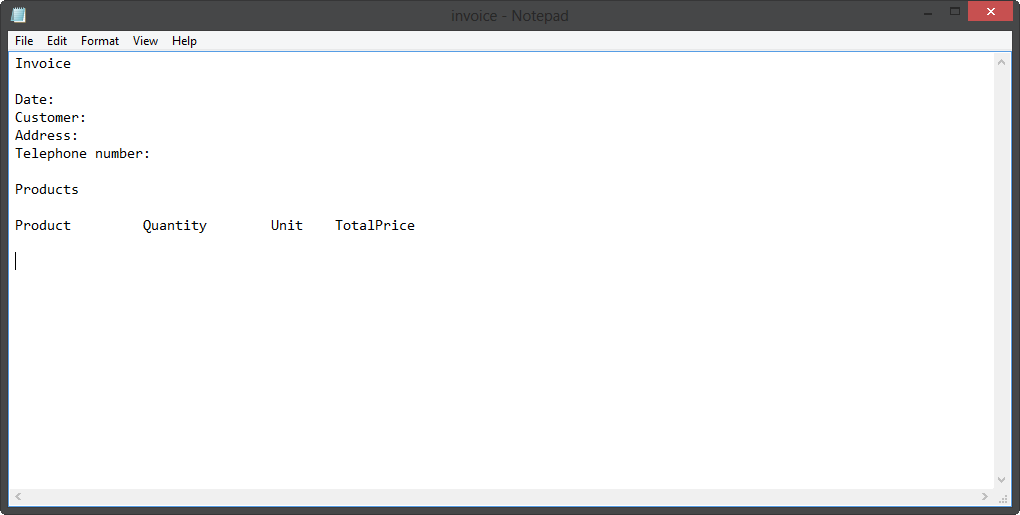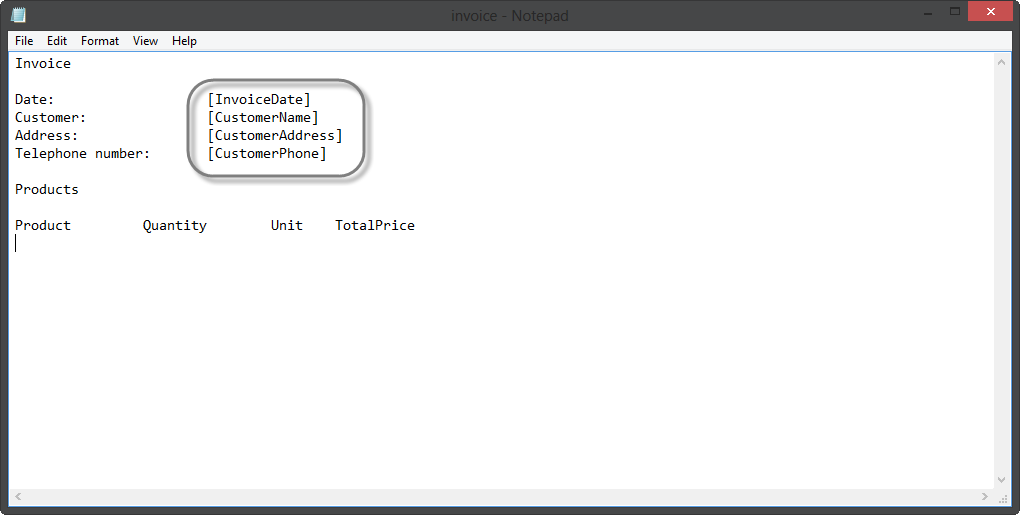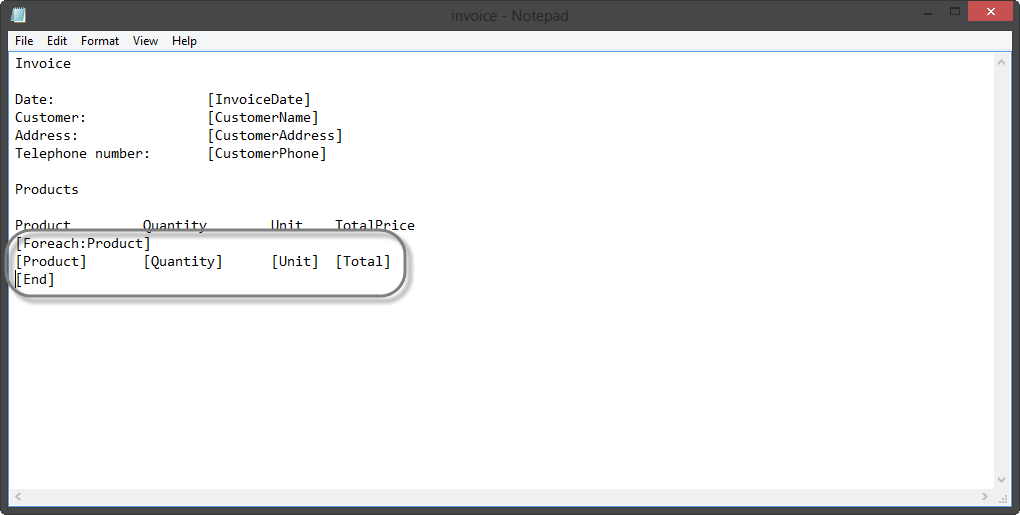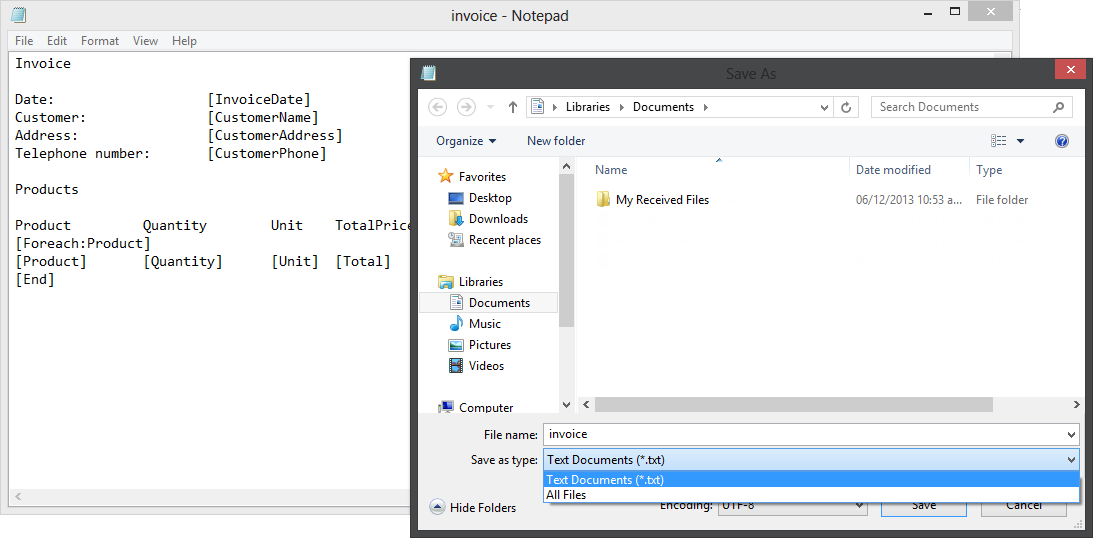Creating a Plain Text Template
To create a plain text template, follow the next steps:
1. Open Notepad and include the desired text content.
The image below displays an example of an Invoice template in plain text. It includes the Customer's information and a table containing the purchased products.

2. Reference the information that will be dynamically obtained from the Bizagi data model using Tags.
Information to be retrieved from Bizagi must be specified within Tags, e.g., [AttributeName].
In this example, the Customer's name is referenced with the [CustomerName] Tag.

To make reference to a collection, use the following tags:
[Foreach:CollectionName]: Indicates the starting point of the collection.[AttributeName]: All attributes between theForeachand theEndtag must belong to the collection.[End]: Indicates the end of the collection.

Note In the image above, the Products collection is referenced by using the [Foreach:Products] sentence. All the tags typed from this tag until the [End] tag are assumed to be attributes of this collection ([Product], [Quantity], [Price]).
Note:
- The attribute and collection names can be different from the names given in the data model. These are only references for mapping the information.
- Tags cannot contain spaces.
- Every single tag for the columns of all collections MUST be unique. No two columns in a document can have the same tag name, even if they belong to different tables.
3. Save your template.
Once the text structure is completed, save the document as a standard text file (.txt).

Note:
- In a single document, you can include the same tag multiple times. You will only need to map it once.
- This rule DOES NOT apply to tags for collections. There can only be ONE tag for each
[Foreach].